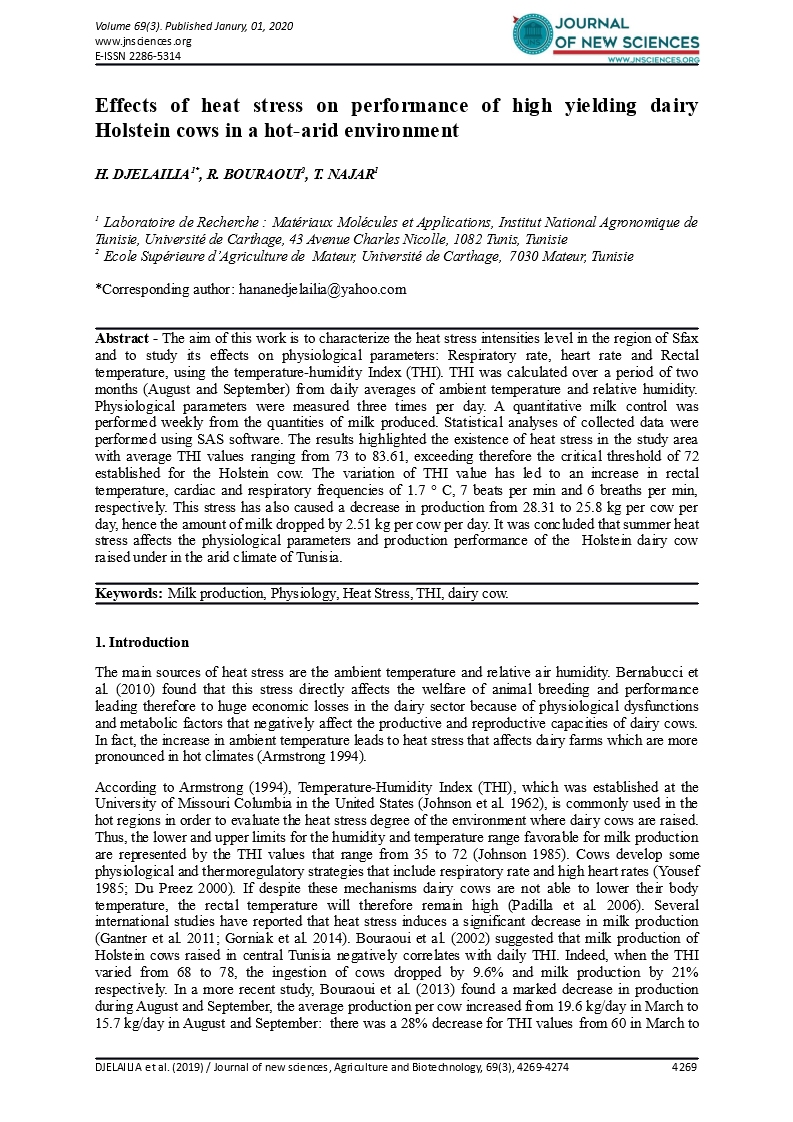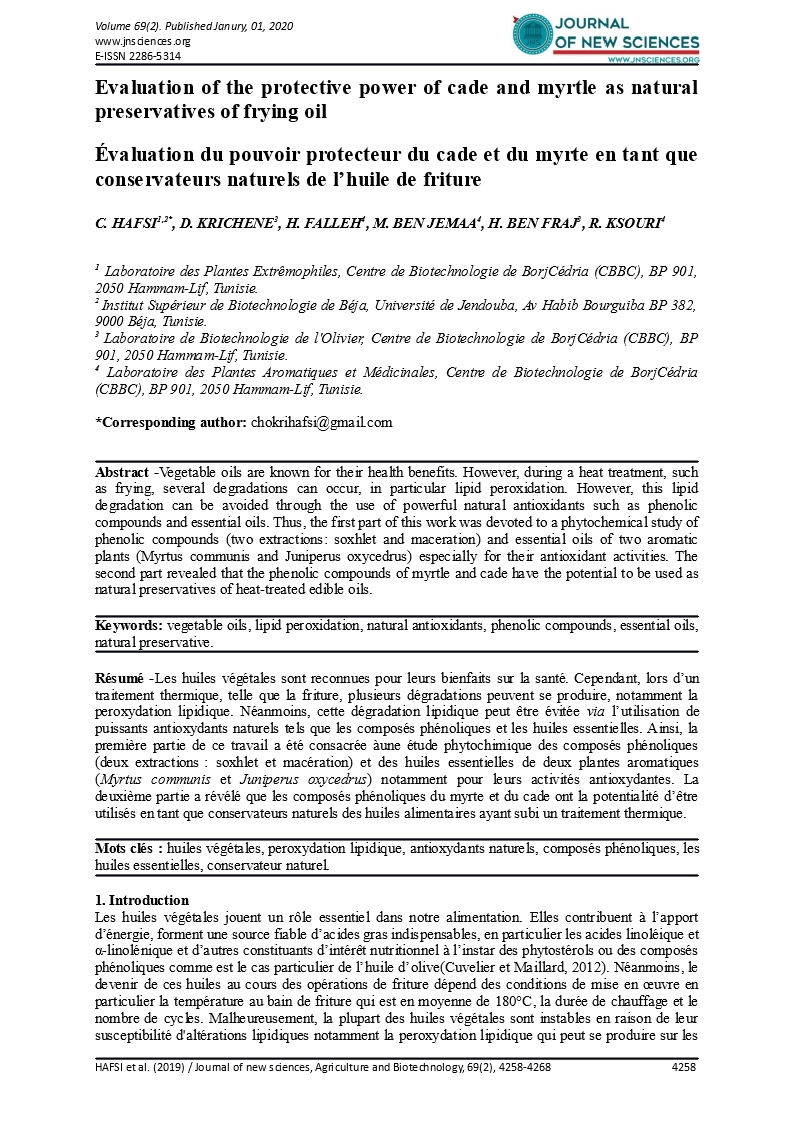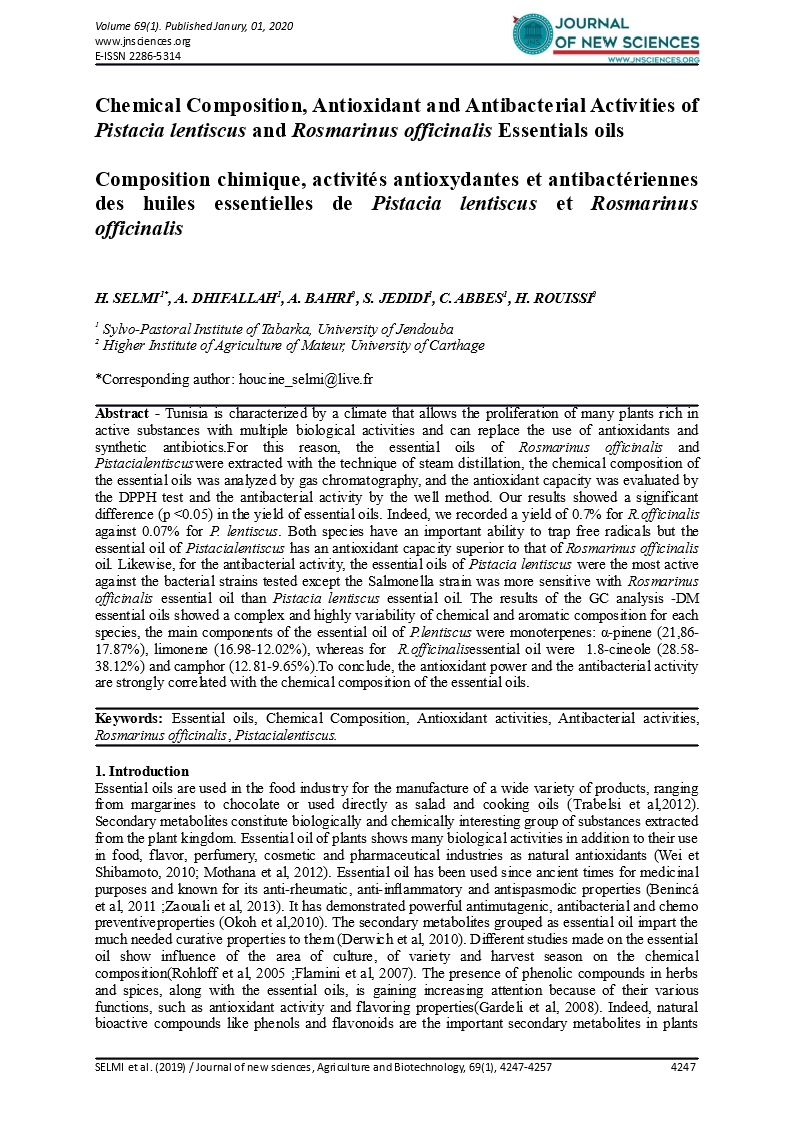- Category: Volume 69
- Hits: 4768
Effects of heat stress on performance of high yielding dairy Holstein cows in a hot-arid environment

H. DJELAILIA1*
R. BOURAOUI2
T. NAJAR1
1 Laboratoire de Recherche : Matériaux Molécules et Applications, Institut National Agronomique de Tunisie, Université de Carthage, 43 Avenue Charles Nicolle, 1082 Tunis, Tunisie
2 Ecole Supérieure d’Agriculture de Mateur, Université de Carthage, 7030 Mateur, Tunisie
Abstract - The aim of this work is to characterize the heat stress intensities level in the region of Sfax and to study its effects on physiological parameters: Respiratory rate, heart rate and Rectal temperature, using the temperature-humidity Index (THI). THI was calculated over a period of two months (August and September) from daily averages of ambient temperature and relative humidity. Physiological parameters were measured three times per day. A quantitative milk control was performed weekly from the quantities of milk produced. Statistical analyses of collected data were performed using SAS software. The results highlighted the existence of heat stress in the study area with average THI values ranging from 73 to 83.61, exceeding therefore the critical threshold of 72 established for the Holstein cow. The variation of THI value has led to an increase in rectal temperature, cardiac and respiratory frequencies of 1.7 ° C, 7 beats per min and 6 breaths per min, respectively. This stress has also caused a decrease in production from 28.31 to 25.8 kg per cow per day, hence the amount of milk dropped by 2.51 kg per cow per day. It was concluded that summer heat stress affects the physiological parameters and production performance of the Holstein dairy cow raised under in the arid climate of Tunisia.
Keywords: Milk production, Physiology, Heat Stress, THI, dairy cow.


